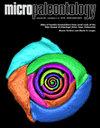西德克萨斯州玻璃山西北部Gilleland峡谷Word组(Guadalupian,中二叠世)斜坡碎屑流床中的Fusulinids
IF 1.6
4区 地球科学
Q3 PALEONTOLOGY
引用次数: 0
摘要
对西北玻璃山吉尔兰峡谷北部坡-盆相序列中的3个瓜达鲁普期异位碎屑流层进行了杂苏里生物地层测年。较深的水异质泥石流层位于Word组(1931年King 3 Word灰岩层)(Guadalupian中期,Wordian早期)的陆架边缘砾岩-颗粒岩相之下,沿Gilleland峡谷西壁(测量剖面基部上方114本文章由计算机程序翻译,如有差异,请以英文原文为准。
Fusulinids from slope debris flow beds in the Word Formation (Guadalupian, Middle Permian), Gilleland Canyon, northwestern Glass Mountains, West Texas
Three Guadalupian allochthonous debris flow beds in a slope-to-basin facies succession in northern Gilleland Canyon of the northwest Glass Mountains were sampled for fusulinid biostratigraphic age-dating. The deeper water allochthonous debris flow beds underlie the shelf-margin packstone-grainstone facies of the Willis Ranch Member of the Word Formation (3rd Word Limestone Bed of King 1931) (middle Guadalupian, early Wordian), which forms a distinct bench all along the west wall of Gilleland Canyon (114–169m above base of measured section). The uppermost GV-RC1 sample, from 104 m in the measured section, contained the fusulinids Parafusulina sellardsi, P. antimonioensis, P. deliciasensis, P. rothi, P. trumpyi, and P. boesei. SampleGV-CM1, from 83min the section, contained P. sellardsi, P. deliciasensis, P. rothi, P. boesei, and P. lineata. The lowest sample GV-CM20, from 76 m in the section, contained only P. deliciasensis and P. wildei. According to previous studies, most of these species appear in Roadian-aged strata and range upward into early Wordian-aged strata, but the common occurrence of P. sellardsi in the upper two samples, and the occurrence of P. antimonioensis in the uppermost sample confirm an early Wordian age.
求助全文
通过发布文献求助,成功后即可免费获取论文全文。
去求助
来源期刊

Micropaleontology
地学-古生物学
CiteScore
3.20
自引率
6.70%
发文量
18
审稿时长
>12 weeks
期刊介绍:
The Journal of Micropalaeontology (JM) is an established international journal covering all aspects of microfossils and their application to both applied studies and basic research. In particular we welcome submissions relating to microfossils and their application to palaeoceanography, palaeoclimatology, palaeobiology, evolution, taxonomy, environmental change and molecular phylogeny. Owned by The Micropalaeontological Society, the scope of the journal is broad, demonstrating the application of microfossils to solving broad geoscience issues.
 求助内容:
求助内容: 应助结果提醒方式:
应助结果提醒方式:


